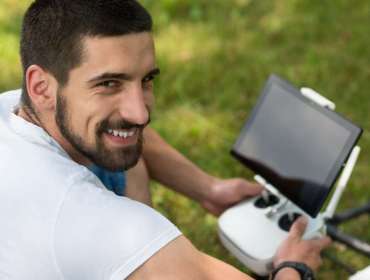“Just One More Thing.” He did it again.
But it wasn’t Steve Jobs. It was Tim Cook. Just when you thought Apple was done with a nice iPhone upgrade—the waterproof iPhone 8 (below) and its two 12MP cameras (wide and telephoto) and a host of other neat tweaks and new tech—he boldly proclaimed during today’s much-anticipated reveal in Cupertino yet another smartphone, the iPhone X. “The future of the smartphone!” he declared. Shifting the hyperbole to hyperdrive, he proclaimed, “This product will set the path of technology for the next decade!”
The iPhone X’s augmented-reality face tracking is nice. You can create emojis with your facial expressions; millennials will be ecstatic. The edge-to-edge screen (buh-bye to the “home button”) is pretty sleek. The Super Retina 5.8-inch display, with its 2436×1125 resolution, specs out spectacularly. The Biometric Face ID method of unlocking your phone is like 1,000x more secure than the home button thumb thingie. There’s also some cool stuff for folks who are into gaming and augmented reality.
Plus, it’s splash and dust-proof.
But I’m a photographer—Show me the camera.
Actually, there are three of ’em:
There’s a front-facing 7MP “TrueDepth” facial recognition camera, with an f/2.2 (unknown focal length but probably a bit on the wide side) lens, Retina Flash, Portrait Lighting (we’ll get to that in a minute) and the ability to animate emojis with your facial expressions, dubbed Animoji. Your teenage daughter will love it. This camera scans your face and unlocks the iPhone X so you can use it.
The two side-by-side cameras on the phone’s back offer larger sensors than previous iPhones and higher resolution 12MP images. One of them has a wide-angle f/1.8 lens, the other, a telephoto with an f/2.4 maximum aperture. Both have optical image stabilization.
Apple claims improved tonal mapping and exposure controls, tap to focus overriding the autofocus and, perhaps most importantly, they claim zero shutter lag. That’s a pretty big claim; we’ll see. Then it gets weird: Artificial Intelligence-based machine learning teaches the camera to recognize any scene and optimize it. Just like that.
Portrait Lighting: You can “dial in” any effect, such as spotlight, softer lighting, side lighting, etc., on a portrait after the fact. It emulates sophisticated studio lighting effects.
Video? 4K at 24, 30 and 60fps, slo-mo at 1080p up to 240fps, time-laspe video and cinematic stabilization.
What does all this new technology mean? For more casual users, and even for more serious photographers, this is one more incentive to leave your big rig at home—that is, assuming everything they claim really happens.
No lag time is very interesting. The higher resolution is also interesting, although the larger sensor is still considerably smaller than those you’d find in a DSLR or Mirrorless camera, and one can expect image quality will still be inferior in low light. The Portrait Lighting feature is going to make many point-and-shooters think they’re portrait professionals.
Just one more thing: You can make calls with it.






